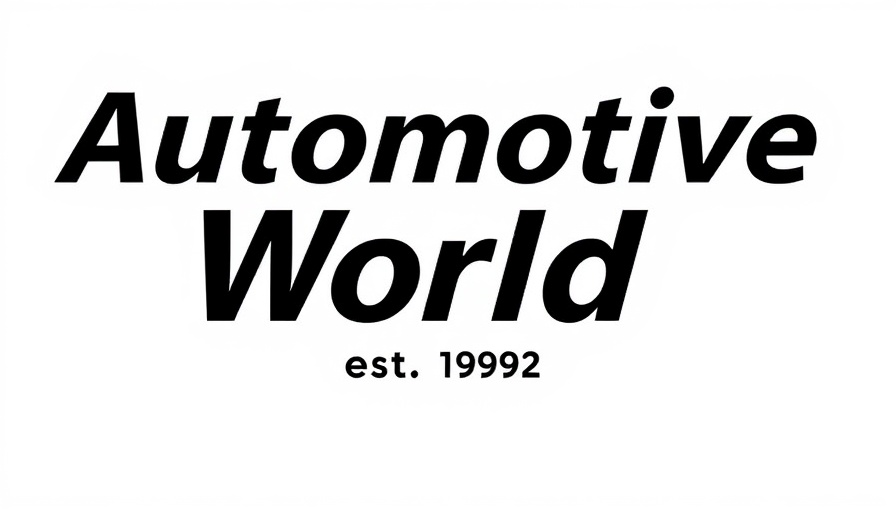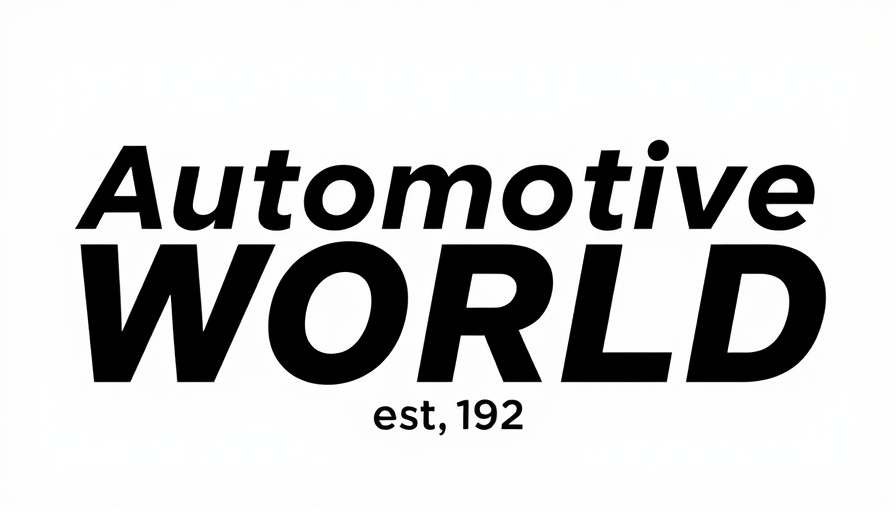
Understanding Chiplet Technology in Automotive Innovation
As the automotive industry grapples with the need for increased processing power to support advanced features and autonomous capabilities, the advent of chiplets may provide an innovative solution. Unlike traditional monolithic architectures, chiplets function as modular building blocks, allowing automakers to customize and create powerful systems on a chip (SoC) efficiently.
Why Chiplet Technology Matters for Software-Defined Vehicles
The transition to software-defined vehicles (SDVs) represents a significant paradigm shift in automotive design. The current automotive semiconductor market is projected to grow substantially, with estimates suggesting it could reach USD 70 billion by 2030. This rise underscores the critical role that chiplet technology will play in shaping the future of automotive innovation. By enabling scalable architectures, chiplets can effectively support the computational demands of new driver-assistance and autonomous driving systems.
The Rise of Collaboration in Chiplet Development
Collaborations like that between Cadence and Arm highlight the growing interest in chiplet technology within the automotive space. The partners are developing reference designs that not only accelerate SDV innovation but also facilitate interoperability of components, crucial for automakers looking to minimize risks associated with silicon design. As more automakers seek to enhance their technological capabilities, these partnerships are likely to become increasingly vital.
Practical Insights for Dealership Owners
Understanding chiplet technology is essential for dealership owners and GMs, as it will influence the types of vehicles available in the marketplace. Investment in training programs that educate about new technologies can help sales teams effectively communicate the advantages of vehicles equipped with advanced chiplet designs. This could enhance the customer experience and potentially drive sales by highlighting the innovative features these vehicles support.
The Path Forward: Overcoming Challenges in Implementation
As the industry moves toward embracing chiplet technology, automakers must tackle substantial challenges, including ensuring safety and reliability in rapidly evolving software architectures. The automotive sector, predominantly mechanical in orientation, faces a cultural shift that necessitates growth in silicon design teams. Strategically partnering with tech leaders can mitigate investment risks associated with new technologies and foster a more agile response to market demands.
The Competitive Landscape: Learning from Leading Innovators
Companies like Tesla have set high standards for SDVs. As more automakers strive to emulate this success, understanding modular technology becomes increasingly urgent. Chiplet development enables companies to customize their semiconductor needs strategically, akin to building with Lego blocks. This 'Lego-like' approach not only supports tailored vehicle functionalities but also promotes energy efficiency and cost-effectiveness in production.
In summary, the shift towards chiplet technology presents a significant opportunity for dealership owners and automotive professionals to stay ahead of trends. As SDVs become the norm, integrating more advanced computing solutions will be integral to automotive success.
Investing in training that keeps your sales force ahead of these innovations—such as auto salesman training—can position your dealership as a leader in the competitive landscape. Stay informed, adapt to changes, and embrace the future of automotive technology.
 Add Row
Add Row  Add
Add 

 Add Row
Add Row  Add Element
Add Element 




Write A Comment